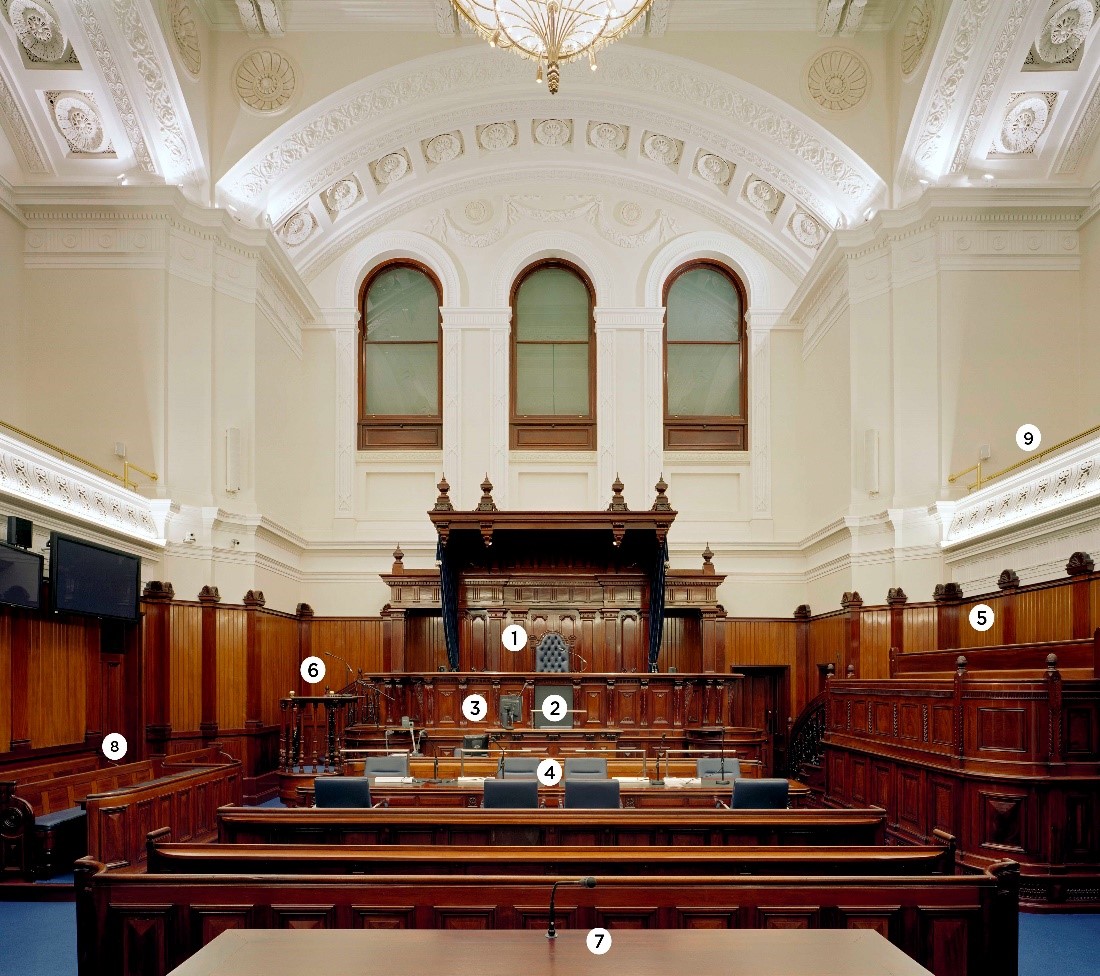Have you ever wondered who’s who in a criminal courtroom?
A criminal courtroom in the Supreme Court will have a judge, a judge's associate, tipstaff, a jury, and lawyers in attendance, each playing an essential role in Court proceedings.
Get to know the people of the Court in this explainer.

1 - Judge
In the Supreme Court judges and judicial registrars sit on the bench to hear matters. Often, but not always, judges wear ceremonial gowns called robes.The judge is an impartial referee who ensures the law and correct procedures are followed.
2 - Judge's associate
The judge’s associate sits directly below the judge in the courtroom. They perform a range of administrative and courtroom duties to support the judge. This may include empanelling the jury, managing the people in Court, and taking notes.
3 - Tipstaff
A tipstaff or second associate sits next to the judge’s associate. They are responsible for opening and closing courtroom proceedings, swearing in witnesses, and looking after the jury.
4 - Lawyers
Lawyers (barristers and solicitors) sit at what’s called the Bar table. Barristers, who may be dressed in gowns, face the judge, while solicitors are seated directly opposite and face the body of the courtroom. The prosecution lawyers sit closest to the jury, and the defence lawyers sit closest to the witness box.
5 - Jury
The jury is a group of people randomly selected to decide the facts in a case where the accused has pleaded not guilty. In criminal cases, there are at least 12 jurors whose job it is to apply the law to the evidence in the case to decide whether the accused is guilty or not guilty. Not all cases or hearing types will involve a jury.
6 - Witness
Witnesses give evidence about what they have heard, seen or otherwise perceived relevant to the case they are involved in. Witnesses usually stand in the witness box to give their evidence once they have made an oath or affirmation to be truthful. Some witnesses will give their evidence remotely via an audio-visual link. Witnesses are asked questions by the lawyers involved in the case – this is called being examined and cross-examined.
7 - Accused
In a criminal trial, the accused is seated in the dock at the back of the courtroom.
8 - Media
Members of the media have a section of the courtroom to sit in to take notes.
9 - Public gallery
People observing the hearing sit in areas of the courtroom called the ‘public gallery’. In some courtrooms, there is limited seating behind the lawyers for people connected to the case to sit. The remainder of the public gallery is upstairs. People can also watch most hearings online – access to a live stream (where available) can be requested from the associate to the presiding judge.
Transcripts & Court Reporters
All criminal hearings in the Supreme Court are transcribed, which is used by the judge, jury or lawyers involved in a case. This is almost always done remotely but on rare occasions, a court reporter may sit beside the judge on the bench and record everything that is said during a trial.
Listen to an episode of the Court’s award-winning podcast, Gertie’s Law: The Criminal Trial Process. From arrest to sentence (or acquittal), we take you through the entire process (Legal Aid, committal hearing, mentions, trial, verdict and appeal).
